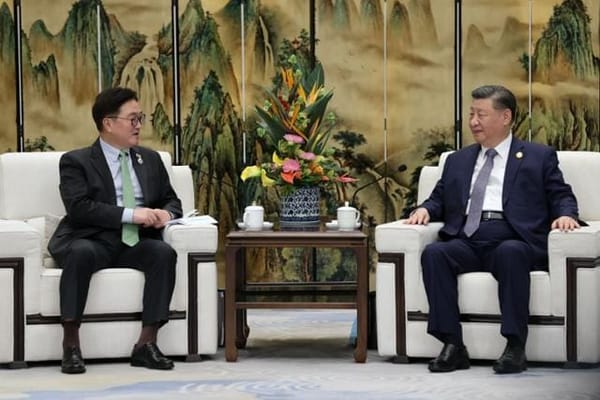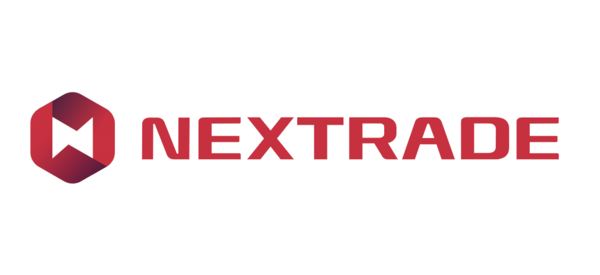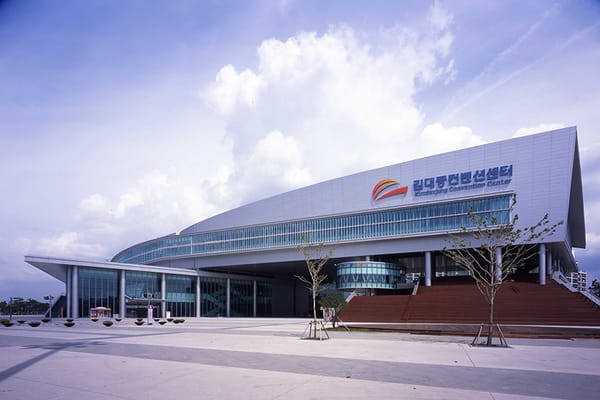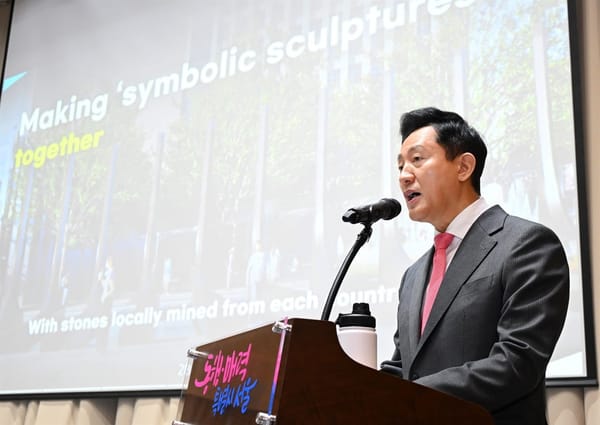Photo: Shin Hyeon-seong (left) and Kwon Do-hyeong, co-founders of Terraform Labs. Credit: Terraform Labs.
The spectacular crash of TerraUSD and Luna, a pair of cryptocurrencies that were South Korea’s largest by market capitalization, is being compared to the 2008 Lehman Brothers crash of crypto, putting their creator Terraform Labs under scrutiny.
TerraUSD is intended to be a “stablecoin,” maintaining its value precisely at USD 1 so that it may serve as a consistent unit of exchange in crypto trades. Other stablecoin such as Tether maintains their peg to the dollar by being backed by a USD reserve. TerraUSD, however, was “algorithmic” stablecoin - that is, it maintained the dollar peg through a computer program rather than being backed by actual money. Luna was the key mechanism in that program. TerraUSD maintained its peg by allowing an exchange between TerraUSD and Luna. If TerraUSD’s value dips below USD 1, holders of TerraUSD may exchange it to USD 1 worth of Luna, for up to USD 100m worth of TerraUSD per day. In doing so, the holders earn the difference, while TerraUSD’s value rises as its supply decreases. The mechanism also works in reverse: if TerraUSD’s value rises above USD 1, holders of Luna may exchange USD 1 worth of Luna with TerraUSD to earn the arbitrage.
This mechanism failed catastrophically beginning on May 7, when TerraUSD dipped to USD 0.987, losing its dollar peg. Panic sale of TerraUSD ensued, further dragging down the coin’s value. Terraform released USD 1.5b worth of bitcoin as a backstop, but such a large sale of bitcoin drove down the value of bitcoin itself, making Terraform’s backstop reserve worth less. With the daily exchange limit of USD 100m quickly overrun, Luna rapidly lost its value as it no longer could be exchanged to TerraUSD. At their peak, TerraUSD’s market cap was over USD 18.5b, and Luna’s over USD 40b. As of May 14, TerraUSD’s market cap is just over USD 2b, Luna’s USD 2.6b. A month ago, each Luna was worth USD 119. As of this writing, TerraUSD has completely lost its dollar peg, being traded at around USD 0.22 per coin. Having lost its “peg” to TerraUSD, each Luna is worth less than USD 0.0004. The collapse was so severe that US Treasury Secretary Janet Yellen used it as an example to exhort the US Senate into regulating stablecoins.
The rise and fall of TerraUSD and Luna is also a window into South Korea’s elites. Terraform Labs was co-founded by 37-year-old Shin Hyeon-seong 신현성 and 30-year-old Kwon Do-hyeong 권도형. Shin is a grandson of Shin Jik-su 신직수, the spy chief of the dictator Park Chung-hee 박정희 and father-in-law of Hong Seok-hyeon 홍석현, the head of JoongAng Ilbo, South Korea’s second-largest newspaper. The brash and outspoken Kwon (who gave an interview just a week before the crash where he said 95% of crypto companies will die, “but there’s also entertainment in watching companies die,”) is a graduate of the prestigious Daewon Foreign Language High School 대원외국어고등학교, which sends dozens of its graduates directly to elite colleges in the United States. Both Shin (University of Pennsylvania, McKinsey & Co.) and Kwon (Stanford University, Apple) studied and began their careers in the United States. Both were frequently subject to glowing media coverage in South Korea, usually cast as victims of the Moon Jae-in 문재인 administration’s restrictive crypto regulations. On May 13, Kwon’s wife requested police protection as angry investors began coming to Kwon’s home.








